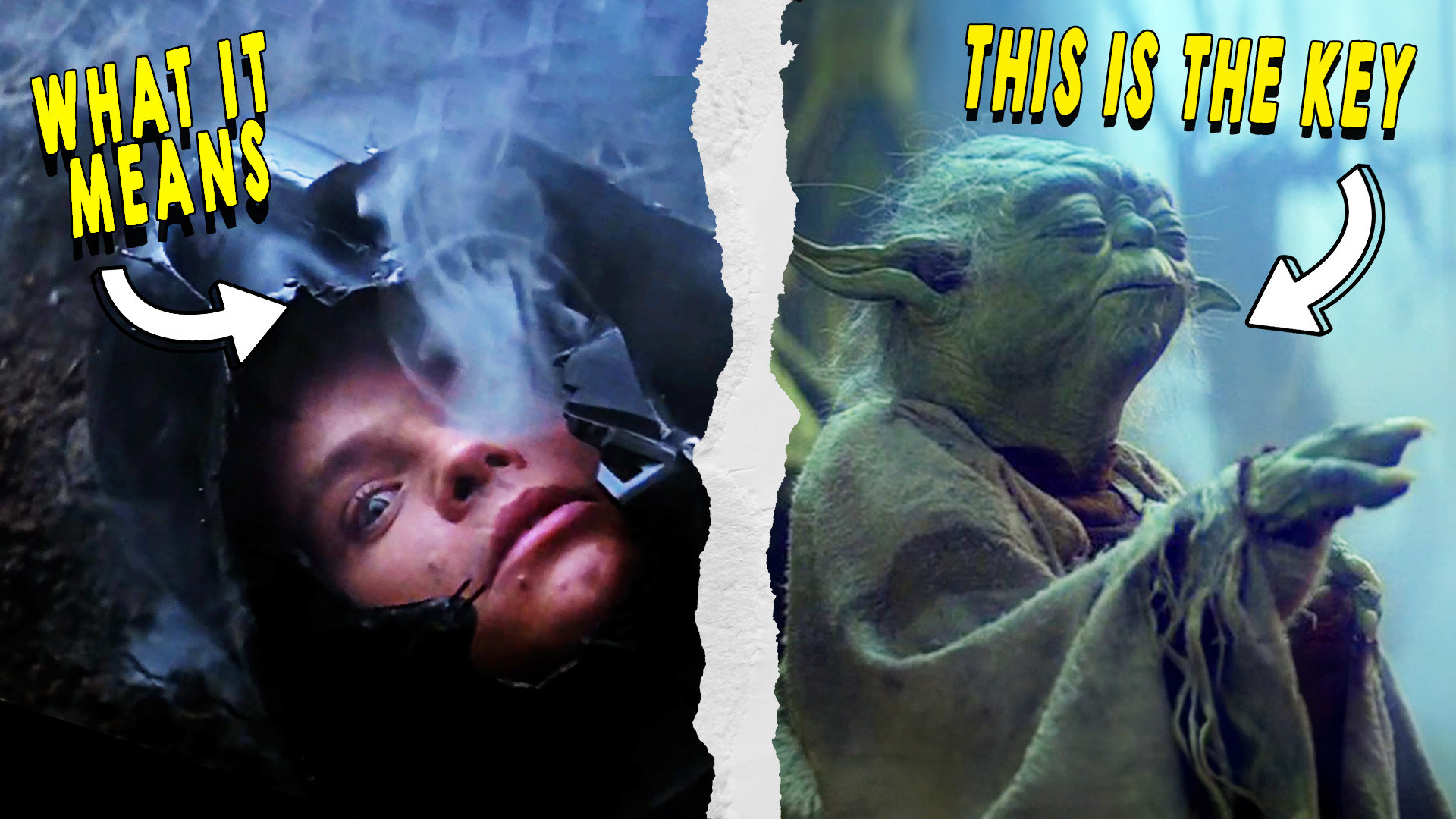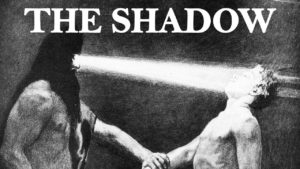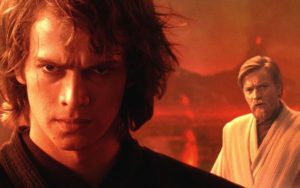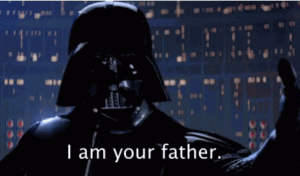
WHAT STAR WARS MEANS — GOING IN DEEP: THE MEANING OF STAR WARS
The world is full of people thinking about Star Wars…. The big questions are all asked: Did Greedo shoot first? (Answer no) Is Ray a Mary Sue? Is the Last Jedi the worst Star Wars film or the best? But I’m not interested in all that….
What if instead, we go deep? Cut open its insides like Han Solo with the Taun Taun and see what’s inside???
What is the deeper meaning of STAR WARS….
I: THE POWER FANTASY INVERTED
At the center of Star Wars is an inversion of power fantasy. Contrast Star Wars against the movies of Arnold Schwarzenegger or Sly Stallone. Movies such as Commando, Cobra are what we call POWER FANTASIES. Even contrasting Star Wars against Marvel movies, in a power fantasy, the hero succeeds through sheer force of will or physical strength.
But often Star Wars rejects this, the most powerful people in Star Wars are often the smallest.
The Ewoks are the perfect example of this… They were meant to parallel Vietnam and the American Empire’s invasion of Nam. Lucas wanted to show the most technologically advanced empire go against determined little teddy bears armed with sticks and stones… And get their ass handed to them.
Star Wars differs from so much of our media as it does not value physical strength. When Luke ends the emperor he does not do it through strength, he does it by tossing his lightsaber aside. He does it through compassion. Star Wars is an anti-power fantasy, where the small, the inconsequential are the heroes.
This is the idea behind R2D2. R2 saves everyone in every single movie. Without R2, everyone would have died in episode four. Now C-3PO is pretty useless, but that doesn’t negate how much R2 matters….
R2 and C3PO were meant to be an homage to the two peasant characters in Akira Kurosawa’s Hidden Fortress. R2D2 and C3PO are ordinary servants thrown into extraordinary circumstances, and in the case of R2, become the hero. What is significant about this is the majority of action films are power fantasies–sending the message to the audience that those with strength are righteous. And this is an idea that can have terrible consequences…
Sure, Star Wars also at times traffics in power fantasy– we imagine & fantasize about having the power of a Jedi. To move things with our mind, but in the end, what brings victory is never power. This is where Star Wars–when it is done right–differs from other hero stories…
In Star Wars, Luke does not win because he is powerful. He is the last X-wing left, the last hope. He wins by firing an impossible shot, by trusting the force. In Return of the Jedi, Luke is only victorious when he tosses aside his lightsaber. It is the only way. Luke cannot destroy the Emperor. Anyone who watched Clone Wars knows this.
And when there is a failure, it is because the hero has succumbed to the power fantasy. Anakin is corrupted by power fantasy, by the belief that he might one day gain the power to stop death.
In ROGUE ONE, the Empire is not defeated through strength, but through sacrifice….
Now compare to the ending of Captain Marvel or Thor Ragnarok, both modern movies made by the same parent company. In both films, the hero succeeds by unlocking a power.
And to be clear, I’m not against POWER FANTASY, I need to admit I, like most people, enjoy it a lot. I love Arnold Schwarzenegger and Sly Stallone. And power fantasy even can have its uses. Marvel movies are entirely power fantasies. Often the power fantasy can serve the purpose of giving people who do not feel powerful in real life a vision of themselves that is more powerful, and that can be a way of uplifting the audience….
But the danger of indulging solely in power fantasy is it reinforces a system that values power as its primary virtue.
In general, I don’t advocate getting rid of any type of story, instead, create a counter-narrative… and this is what Star Wars does. Star Wars offers that there are forces capable of overcoming power forces like compassion, sacrifice, and intuition. Star Wars offers an alternative idea to the concept that power makes right.
This is where some of the new Star Wars misses the point… It often succumbs to the same obsession with power worship that Lucas argues against in the first series and shows the consequences of in the Prequels.
The consequences of Power Worship as the dominant narrative can be devastating. It is no secret that George Lucas saw The Empire as a stand-in for America. Lucas was a child of the ’60s, but where his peers were dropping out and dropping acid, Lucas played it straight, but the rebellion came out in a different way.
Star War is an Anti-authoritarian text, arguing against all forms of oppression. Even when the oppressor is us…
II: STAR WARS IS A NEW MYTH….
You can see the roots of Star Wars in George Lucas’ mega-hit film, American Graffiti. It’s about growing up in Modesto California, and dreaming of getting out, dreaming of bigger things.
You can see the parallels between Richard Dreyfuss’ Curt, and Luke, as they both yearn for a bigger life. Star Wars is a hero’s Journey, and at the heart of every hero’s journey is a coming-of-age story, a ritual of transformation. Lucas has talked about a lack of heroes at the time Star Wars came out, — we have no lack of heroes anymore– maybe a few too many in fact, but at the time, seventies cinema was a place for gritty tragedy with dark protagonists and downer endings…
Rituals cement the important moments of our lives in memory, but so much of modern society has forgotten the importance of ritual. The hero’s journey returns the ritual of the coming of age to the culture through story. In creating Star Wars, Lucas sought to bring an ancient myth into the modern era…
Much has been written about Lucas’ obsession and friendship with Joseph Campbell, and how he built Star Wars on the bones of the Hero’s Journey…
If Star Wars is the hero’s journey in its purest form, by understanding the core meaning of the Hero with a Thousand Faces we can understand Star Wars….But what is the core meaning of the Hero’s Journey?
Joseph Campbell talks about a coming-of-age ritual in certain Aboriginal tribes…..
In the ritual, the boys are told they are going to be circumcised. As a part of the ritual the boys run from their fathers into their mother’s arms, and are pried away by the fathers, held down, and circumcised. The Father’s act creates fear and resentment against the father, but the father is just playing their part in the ritual…
In the stage of the hero’s journey called the Atonement of the Father, the hero has an earth-shattering revelation that temporarily turns the hatred inward, toward the father, toward the hero’s Shadow. In The Hero with a Thousand Faces, Joseph Campbell writes about the necessity of turning the hatred inward, the realization that you are part of the problem…
He writes that societies that do not turn against themselves, will become lost in nationalism, and self-worship. They are boys who never pulled away from their mother’s breast, incapable of seeing the truth about the place they come from…
The Hero’s journey is a separation from what you know and an entering into a ritual to become a complete person…
At the moment when Luke discovers his father is Vader, he finally understands that what he thought was evil has been inside of him all along. This moment is telegraphed when Luke enters the swamp in Dagobah. He hears something and Yoda tells him to investigate. He tells him he will not need his lightsaber, But Luke ignores his mentor and takes it anyway. He sees Vader and they clash sabers, Luke cuts off his head, and the faceplate explodes revealing Luke’s face. This moment echoes Carl Jung’s idea of the Shadow.

A shadow is a dark reflection of a person. Facing your shadow is part of Carl Jung’s process of Individuation. You must travel into your opposite. Luke shows his flaw by ignoring Yoda’s suggestion to leave his lightsaber behind. This moment echoes the end of Return of the Jedi, where Luke faces off against Vader. He knocks him down and cuts off his hand. He’s about to kill him, but he stops himself. He looks at Vader, looks at his own mechanical hand, and tosses away the lightsaber…
He turns the hatred inward, but in the end, the hero cannot hold onto that hatred, they must move beyond it. At the end of the trilogy, Luke accepts the father inside him and tosses the lightsaber aside. He has moved beyond the hatred. But the hatred was essential to his growth–essential for the son to rebel against the past to create a new future, otherwise, there is no growth.No way for society to progress…
This is what the Hero’s journey does, it takes the hero through a harsh and brutal transformative ritual that challenges the core of who they are. At the end of the journey, the hero will have gone on a journey to transform their world and instead will find they have transformed themselves. In the end, the journey exists to bring Luke in touch with the force.
III: WHAT DOES THE FORCE MEAN?
In analyzing what the force means, it is important to understand how it contrasts against the Empire. The Empire is concerned with order above all. They are capable of destroying planets, but other than this act, they are concerned with bringing order to the galaxy.
Palpatine, played with glorious malevolence by Ian McDairmond, is the epitome of evil — Or is he??? Or does he simply believe that he is the best person to run the galaxy? Does he believe that order is the way and that his evil acts are justified by the control he has brought to the galaxy.
What other use does power have for Palpatine? He doesn’t live well. His clothes are not the garish gold of a scarface, they are the black robes of a monk. So what does Palpatine gain from power if he does not desire material things?
Palpatine desires power for the sake of power. The Sith desire to control life itself. Mastery over death is a philosophy based on fear. When one fears life, they desire to control it. Sure, Palpy looks like pure evil, but Lucas doesn’t seem to believe in that– As he states here: he’s interested in how a person’s belief that they are doing what is best for society creates evil.
And look at the society before the Empire… always in conflict. The Empire believes in Order… So if the Empire is that which believes order is the way to maintain life.
Then what is the force?
The philosophy of the force is the opposite of order, it is knowing that you cannot control the universe. You don’t control the force, you let it flow through you. Anger is a reaction to loss of control.
A Sith rages against the world in a hopeless and lost quest to control what cannot be controlled. They are incapable of happiness, corrupted so completely there must only be two of them because they must always watch their back for the moment when their apprentice tries to kill them. The Sith’s need for control is so absolute, that they can never see how impossible it all is…
We don’t have to see the backstory of each of these villains to know that their corruption comes from fear, although these origin stories have been chronicled in novels and comic books, some canon, some not… We can only guess that their origin goes something like this.
IV. The Rise and Fall of Anakin Skywalker… How Anger Corrupts
At the core of Star Wars, is the rise and fall of Anakin Skywalker. Prophecied to bring balance to the force, this prophecy comes true, but in a way no one, even a Jedi, could foresee.
It is Anakin Skywalker who destroys the Jedi, and brings Palpatine to power… and ultimately, it is Anakin Skywalker who then destroys Palpatine, bringing Balance to the force.
It is an ugly process and a pattern that often is replicated in history…
Society becomes complacent, silly, and disordered. And then a massive wave of violence arises and takes over, destroying the status quo. That new order may be fascist, and will eventually need to be rebelled against, overthrown… and balance restored. until the cycle begins again.
The prequels are not great movies, but they do tell a great story. It is the delivery that is off.
Delivery aside, the rise and fall of Anakin Skywalker is an incredible tale of Shakespearean depth (even if the dialogue ain’t Shakespeare)

Anakin begins as the Chosen one, again this is George Lucas establishing and idea and then destroying it. Anakin is an angry young man, something the Jedi council senses when it denies that he should be taught. Anakin goes against the wishes of the Jedi Council, he begins to lie, suggesting to Padme they should hide their love from the council. When he has visions of her death, he seeks the power to change the future, and when Palpatine tells him this power is the only way, he succumbs…
But the seeds of his downfall are sown throughout…
In a scene where Padme and Anakin are having dinner together, Anakin uses the force to pass a piece of fruit to her. He remarks, “Obi-Wan would be very grumpy if he caught me doing this.”
The force is not a parlor trick. He does not respect the power he wields… This is written into the lore about the Dark Side, the force of lightning is something only the dark side can wield. (This is what makes the Rise of Skywalker such an affront to Star Wars) It is not that Yoda can’t do use force lightning, he won’t do it. Power corrupts, and only through denial of that power can one stay balanced…
Anakin is all impulse, all Id. He is the chosen one and he believes it. He serves his own ego above all else.
This is what evil is— It is not a person who wears black or a simple idea of black Vs white…
Star Wars is often described as a simple tale of good vs. evil, but it is neither. It isn’t simple, and part of what is so great about Star Wars is the way it obliterates the audience’s concept of evil.
PART FIVE: Analyzing Good & Evil
Star Wars is not simple. And Star Wars doesn’t believe in evil, not in how it is traditionally seen. It helps to remember how we are supposed to watch it. As a kid, in 1977, when I first saw Star Wars, Darth Vader was the personification of evil. He might as well have been Satan himself.
And then this happened….

This moment destroyed all simple concepts of good and evil…
Concepts as a kid, you’d been sold on…The trick of showing Vader as the most evil thing imaginable then revealing he started out good, shatters the perception of everyone who watched it.
That’s why if you’re going to show the movie to someone, you must watch them in the original order. Denying the audience the revelation that Vader is Luke’s Father undercuts the power of the story.
THE PROPER ORDER TO WATCH THE MOVIES….
Even more important, is to leave time between watching the movies. There were years between Star Wars and Empire, years where you played with toys and role-played and imagined Vader as the source of all evil.
So that one day, when you discovered the truth, just like Luke, it was ego-shattering. Grasping the concept that evil isn’t simple, that there really is only corruption, is an important part of a person’s growth. A child exists in the simple idea that there are good things and bad things… an adult grows beyond (Or so you’d hope, but our political landscape might tell us the opposite).
The reality is, those who wear white hats may still be evil, good people are capable of awful things, and the ones we know to be evil, didn’t necessarily start that way (Sure there are exceptions, like Ted Bundy) but for the most part, it is a corrupting ideology that changes a person from good to evil.
But the brilliance of Star Wars is the way it establishes an idea and then destroys it. It is deconstructive by nature.
PART SIX: STAR WARS is a DECONSTRUCTIONIST TEXT
When watching The Luke Skywalker saga we imagined what a better world it would be if the Jedi ruled. And then we see it…
And it’s not so great…
The Republic is a mess. There’s slavery, there’s conflict everywhere, The Jedi council are ineffective, the Senate is corrupt, worthless, incapable of ruling… (Sound familiar). By setting us up to spend three movies wanting a world where the Jedi are in charge and then showing us that world, and showing it to be corrupt in a different way, but still corrupt, the story brilliantly teaches the concepts of POST-MODERNISM….
Post-modernism is a movement in philosophy and art, that is distrustful of all META-NARRATIVES. A meta narrative is a story used as an underlying formative idea that a culture is built on… A world-view, in a way.
Post-modernism, particularly in art, and let’s stick with how it is used in art as opposed to philosophy.
My understanding of it comes from art. And here we have to do a brief, probably simplistic and inaccurate analysis of art history…..
The movement called MODERNISM sought to attack the fundamental narratives society is built on. Narratives such as religion, American Exceptionalism or dominant political ideologies such as capitalism or imperialism. These new artists sought to overthrow the status quo, and replace it with new, more pure society.
Post-modernism came along as a reaction to this concept.
The post-modernists saw that once the old status quo is burned down and replaced by the modernist’s concept of the world, the new narrative becomes a similarly authoritarian idea, one that then must be torn down.
Rather than believing they know the way, the post-modern artist believes all ways of organizing the universe must be met with the same level of distrust…
This is what happens in the prequels… We are shown a corrupt society, that is then overthrown by a fascist, who is then overthrown by rebels, who inevitably will replace it with a society that will believe it has the way but will eventually grow corrupt.
Star Wars is an Anti-Authoritarian text. It understands that there cannot be one way of thinking or an idea or principle or organizing the universe, there can only be an ever-changing evolving system. An establishing of the status quo, followed by its violent destruction, followed by the emergence of a new idea, followed by the corruption of that idea, repeat, repeat….
Any attempt to control the universe, results in corruption. The only way is surrender to the graceful energy flowing through the universe….
And this ultimately is what Star Wars is all about…
May the force be with you…
